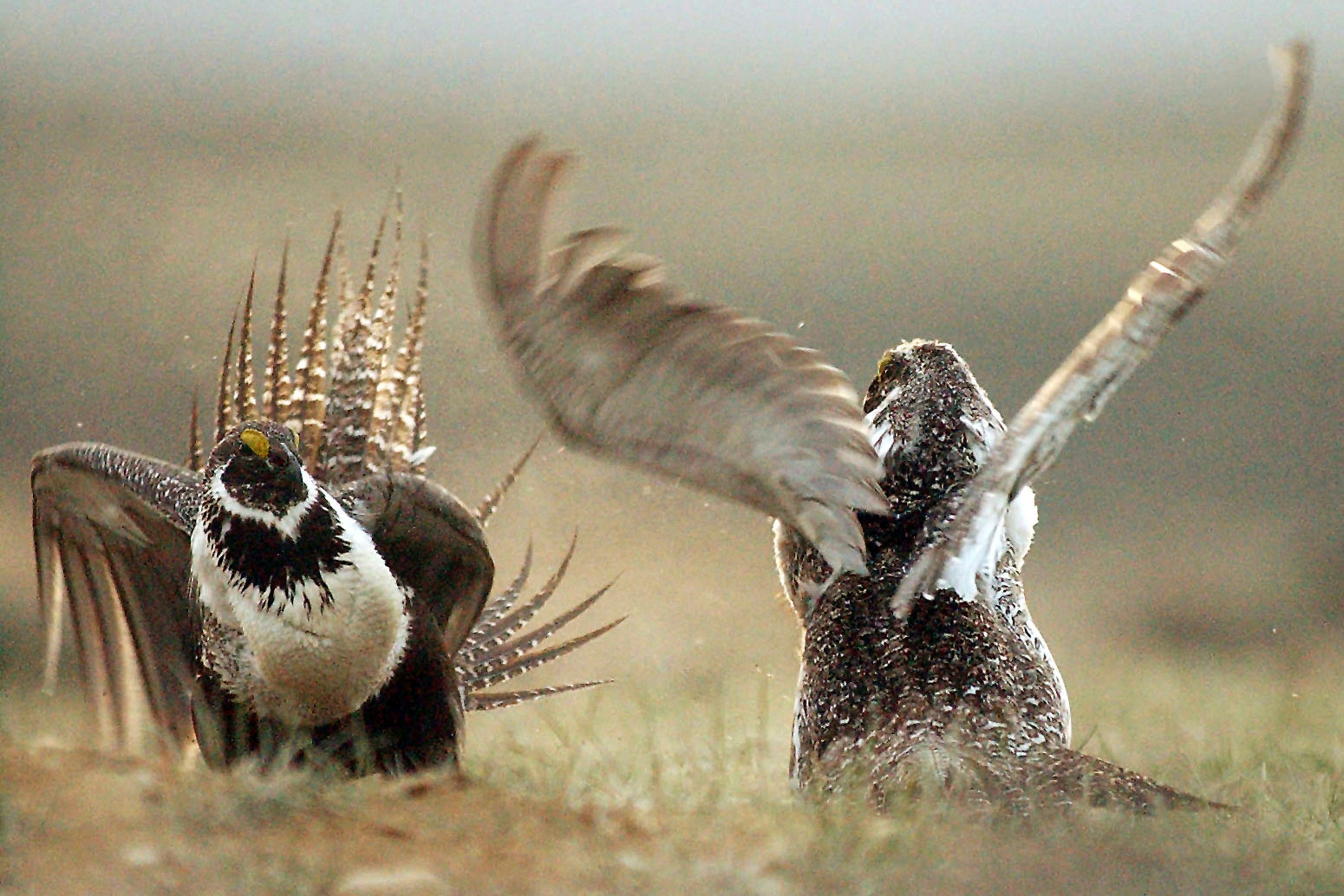Trump plans would ease protections for sage grouse in West
The Trump administration announced plans that ease protections for sage grouse in the West, prompting an outcry by critics who say the move paves the way for widespread mining and drilling and ignores a federal court ruling

The Trump administration announced plans Thursday that ease protections for sage grouse in the West, prompting an outcry by critics who say the move paves the way for widespread mining and drilling and ignores a federal court ruling.
U.S. officials plan to formally publish what are called supplemental environmental impact statements on Friday for the management of greater sage grouse habitat on public lands in seven states Publication in the Federal Register is part of a process that could allow the plans to take effect shortly before Trump leaves office.
The plans by the U.S. Bureau of Land Management ease rules on mining, drilling and grazing across millions of acres that the agency says reflect the needs of Western communities and sagebrush-steppe habitat.
The plans “better align the BLM’s management of sage-grouse habitat while addressing the circumstances and needs of each individual state,” said Casey Hammond, principal deputy assistant secretary for land and minerals management.
The ground-dwelling greater sage grouse is at the center of a bitter conflict between the administration and conservationists involving how much of the West’s expansive public lands should be opened to development.
Sage grouse have been in decline for decades due to habitat loss and other factors. The animals range across about 270,000 square miles (700,000 square kilometers) in parts of 11 Western U.S. states and two Canadian provinces. Their numbers have plummeted due to energy development, disease and other factors.
The birds are known for an elaborate mating ritual in which males fan their tails and puff out yellow air sacs in their chests as they strut around breeding grounds. They are not considered an endangered or protected species.
The six plans cover Idaho, Wyoming, Colorado, Utah, Nevada/northeastern California, and Oregon. A previous Trump administration plan relaxing sage grouse protections was rejected by a federal judge in 2019.
In that order, U.S. District Judge B. Lynn Winmill in Boise temporarily blocked the administration of Presdent Trump from easing rules on mining, drilling and grazing, saying such activities left unchecked were likely to harm sage grouse.
The supplemental environmental impact statements being published Friday are intended to address issues identified in that order.
But each plan reviewed by The Associated Press appears to have nearly identical wording and does not appear to make any changes to the federal government's sage grouse plan rejected by Winmill.
Each state has its own director of land management signing off on the document.
“I don't think that's going to fly in court,” said Erik Molvar of Western Watersheds Project. “I think this is an example of the Trump administration ignoring the judicial branch and trying to bulldoze and get its way despite the judge already saying that path is illegal.”
Opponents said Thursday's action is intended to make it harder for the incoming Biden administration to overturn the plans.
"The Biden administration would have to start all over again, develop new plans with notice and comment, and provide a clear justification as to why the plans are yet again being changed,'' said Mary Greene, an attorney with the National Wildlife Federation.
In a related case, a federal judge in Montana in May dealt a blow to the administration’s efforts, saying officials failed to protect sage grouse habitat when they issued energy leases on hundreds of square miles. U.S. District Judge Brian Morris said the Interior Department did not do enough to encourage development outside of areas with greater sage grouse.
Under former President Barack Obama, the Interior Department delayed lease sales on millions of acres of public land largely because of worries that intensive development could harm sage grouse. In 2015, it adopted a set of wide-ranging plans meant to protect the best grouse habitat and keep the bird off the threatened and endangered species list.
After Trump took office in 2017, the agency modified those plans to ease restrictions on development, which meant officials no longer had to prioritize development outside grouse habitat.